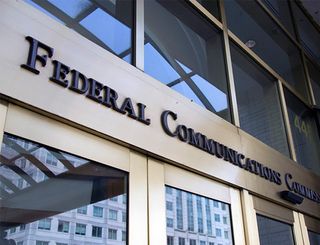FCC Gets Spectrum Of Reaction On Incentive Auction Vote

The FCC was getting plenty of reaction to its vote Thursday (Dec. 11) seeking comment on the details of a proposed broadcast incentive auction mechanism, including details about bidding on both the reverse end—broadcasters volunteering to give up spectrum at a price—and the forward end—wireless companies buying up those spectrum licenses.
One thing that caught the attention of Wells Fargo analyst Marci Ryvicker was the FCC's use of an 84 MHz clearing target, rather than the 126 MHz the FCC used in estimates it offered up to broadcasters on how much their spectrum might be worth.
The FCC initially targeted 120 MHz, then more recently has been indicating 84 MHz might be a more reasonable target. In outlining the possible opening bid prices to broadcasters, the FCC did concede they were high-end estimates, and the 126 MHz always seemed high.
In the public notice voted on this week, the FCC was pricing the spectrum on an estimate of that 84 MHz clearing target, which Ryvicker saw as one of the big takeaways.
"We have no idea why the PN [public notice] figures differ from what the FCC provided via the Greenhill report [the outside company that prepared the financial analysis of potential TV station spectrum prices] and sort of confirms broadcast distrust of the FCC (recall most groups didn't view the Greenhill report as an honest assessment of take-home valuations; yesterday's news seems to support this)."
But Ryvicker did concede it was a notice seeking comment, a point FCC chairman Tom Wheeler made at the meeting where it was approved by a 3-2 margin over the objection of Republicans. "We imagine there [are] going to be a lot of questions on that $1.25 [per MHz pop price based on 84 MHz]—given Greenhill ($1.50 MHz pop) and the AWS-3 auction ($2.00-plus MHz pop)."
When Republicans asked why their edits to the auction item had been rejected, Wheeler said that they were trying to excise its tentative conclusions, and that he preferred giving folks targets to shoot at rather than a “Chinese laundry” list of options to consider.
Broadcasting & Cable Newsletter
The smarter way to stay on top of broadcasting and cable industry. Sign up below
The FCC tentatively concludes that the TV station spectrum price should factor in population served and use "dynamic reserve pricing." Both of those drew boos from the Expanding Opportunities for Broadcasters Coalition, stations interested in participating in the auction if the price is right, which argue they could artificially lower the prices broadcasters could get for that spectrum, including in small markets adjacent to larger ones, the sort of markets where those EOBC members may have channels—the FCC is allowing potential bidders to remain anonymous for obvious competitive and business reasons.
"We are disappointed that the proposals in the Comment Public Notice adopted by the FCC today appear to ignore the serious concerns that we expressed regarding two issues - (1) using a station's covered population, rather than its interference profile, to set initial prices offered to broadcasters and (2) the bewilderingly complicated Dynamic Reserve Pricing proposal," said EOBC executive director Preston Padden. "We will remain engaged and do our best to guide the FCC back to its promise to let market forces, not bureaucratic manipulation, drive the prices received by participating broadcasters."
The National Association of Broadcasters, which has sued the FCC over portions of its auction framework, was keeping its powder dry and accentuating the positive.
“NAB supports the incentive auction and believes it can be done in a way that benefits broadcasters and broadband providers alike. As a result of the AWS-3 auction, the FCC has a chance to step back and recognize that a successful TV auction is within reach," said NAB president Gordon Smith. "It can be done without adopting a variable band plan and without cutting corners in ways that harm broadcasters. We will work with the Commission to ensure the auction is done right.”
The Consumer Electronics Association, which wants the FCC to get on with the auction—now scheduled for 2016—to free up wireless spectrum for all the tablets and computers and smart phones its members produce, signaled it thought the FCC was on the right track.
“The FCC faces a tough challenge running the world’s first spectrum incentive auction, and deserves tremendous credit for its work in developing an auction process that can work for stakeholders and broadcasters alike," said CEA president Gary Shapiro.
"Our country is hungry for additional spectrum, especially as fewer American homes rely solely on antennas to watch TV programs and more of us use the Internet for our favorite TV content. Additionally, unlicensed spectrum generates $62 billion a year for the U.S. economy, helping fuel our economic engine and creating new jobs."
Contributing editor John Eggerton has been an editor and/or writer on media regulation, legislation and policy for over four decades, including covering the FCC, FTC, Congress, the major media trade associations, and the federal courts. In addition to Multichannel News and Broadcasting + Cable, his work has appeared in Radio World, TV Technology, TV Fax, This Week in Consumer Electronics, Variety and the Encyclopedia Britannica.

